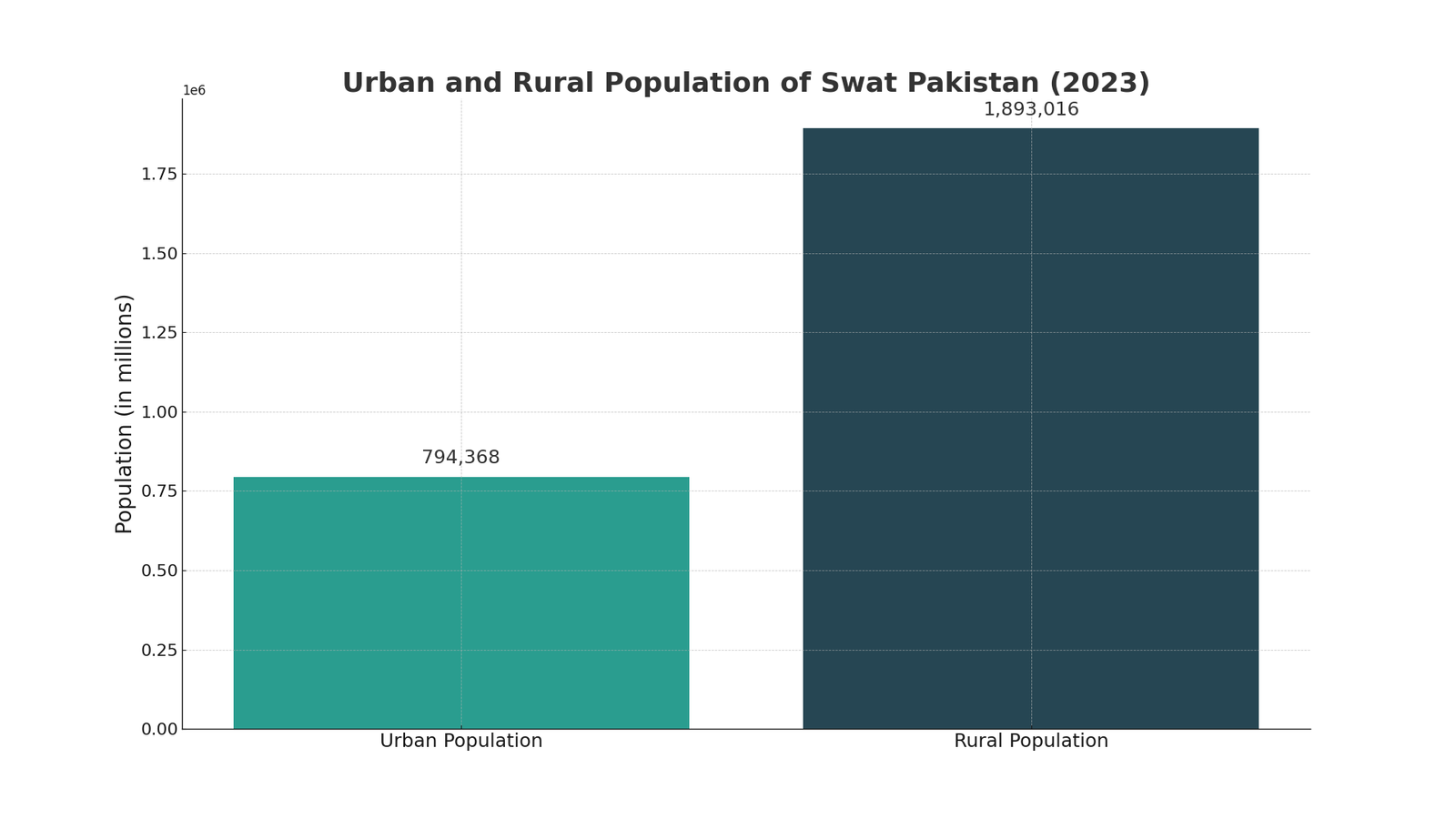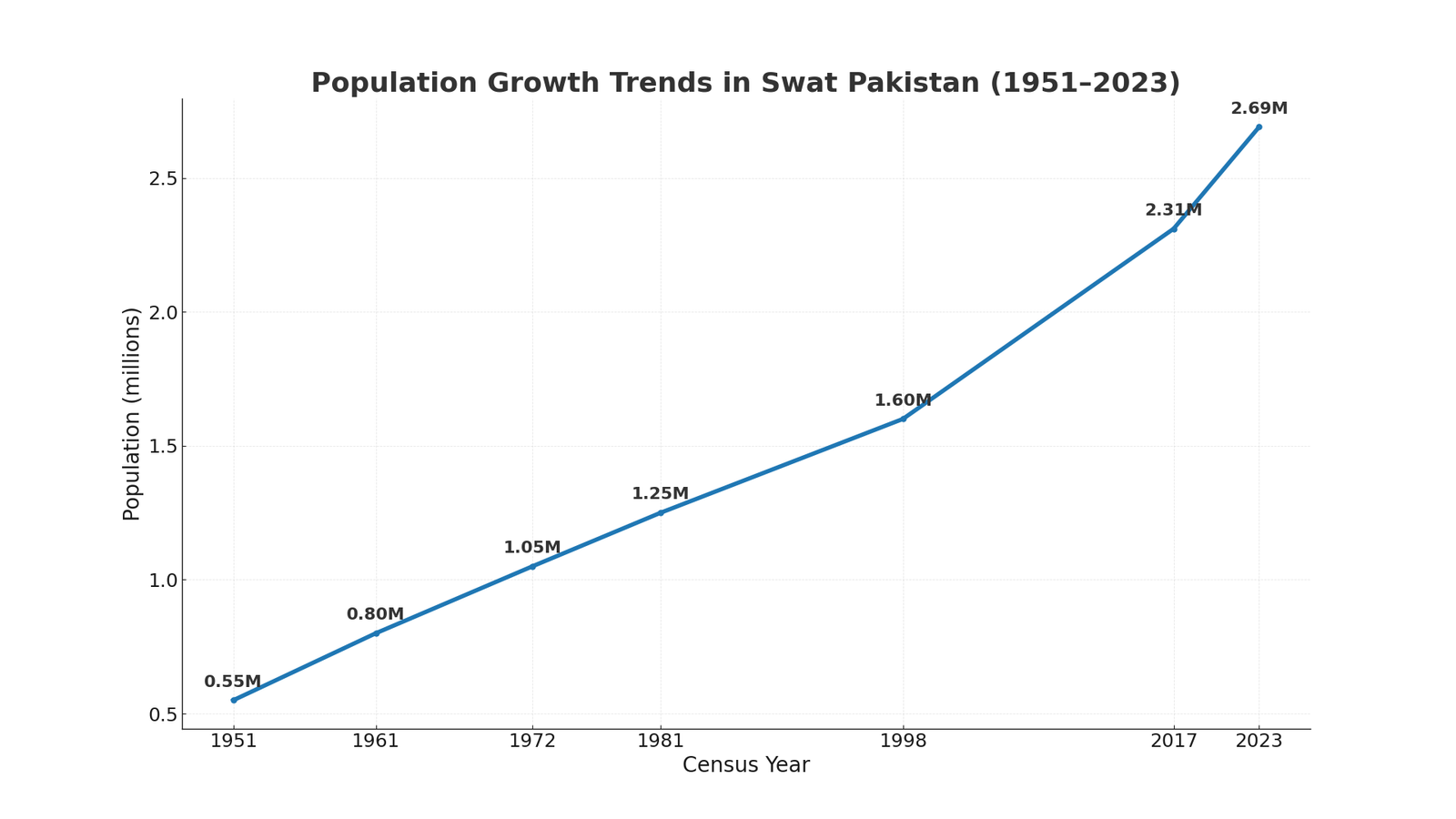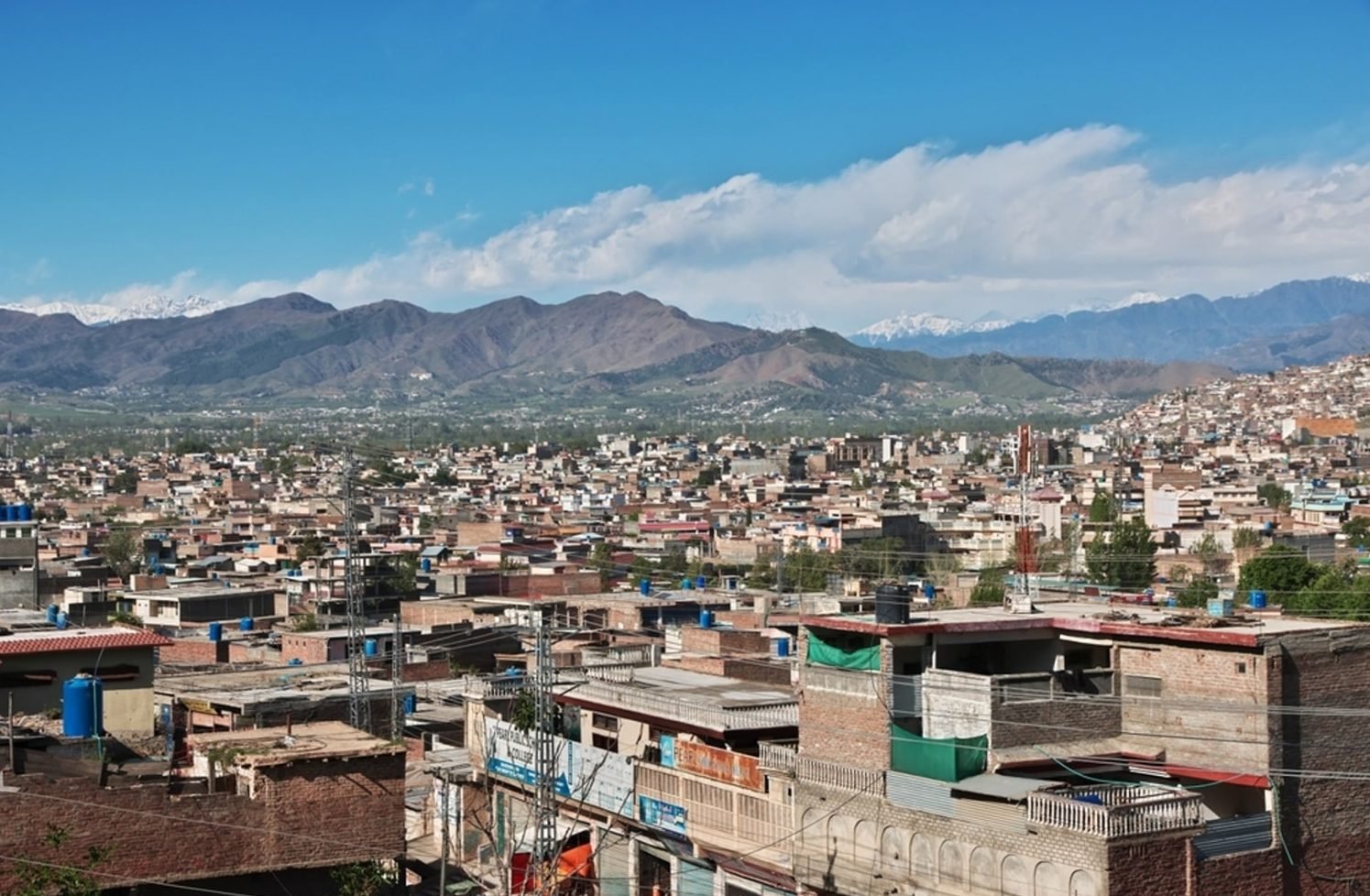Population of Swat Pakistan: Latest Figures, Trends, and Demographics
Swat Pakistan recorded a total population of 2,687,384 in the 2023 national census. The district spans 5,337 square kilometers, which places its population density at roughly 504 people per km² based on the latest count. Swat remains a predominantly rural district with a sizable urban core centered on Mingora and Saidu Sharif.
This guide provides the verified headline number, the urban and rural split, household size, growth rate since 2017, and a clear method for projections. All figures are cross checked with the Pakistan Bureau of Statistics and reputable statistical aggregators, and links are included for verification where helpful.
By the end, you will have an at a glance view of the current population of Swat Pakistan, a concise understanding of how it has changed over time, and the precise indicators that explain its demographic profile today.
Population of Swat Pakistan, 2023 to 2025, Current Census Data
Latest population of Swat Pakistan
The official 2023 census reports 2,687,384 residents in Swat District. Urban residents number approximately 794,368 and rural residents approximately 1,893,016. You can verify these figures in the Pakistan Bureau of Statistics releases and census derived statistical portals such as CityPopulation and the Swat District profile.
- Total population, 2023
- 2,687,384
- Area
- 5,337 km²
- Population density, 2023
- About 504 people per km², computed from total population divided by area
- Urban population, 2023
- ≈ 794,368
- Rural population, 2023
- ≈ 1,893,016
- Average household size
- ≈ 7.05 persons per household, based on KP census tables
- Largest city
- Mingora, ≈ 361,112 residents, see Mingora city profile
Annual growth rate and projections
Between 2017 and 2023, Swat’s population increased from roughly 2.31 million to 2.69 million, which corresponds to an average annual growth near 2.56 percent. If the same pace holds, a simple continuation suggests a mid 2025 population near 2.83 million (illustrative only, projections depend on migration and natural increase). Sources for the base years include the Pakistan Bureau of Statistics and CityPopulation.
Population density and household size
Using the 2023 census total and the district’s mapped area, density computes to approximately 504 people per km². Household structure remains large by global standards, averaging about 7.05 persons per household across Khyber Pakhtunkhwa census returns. These two indicators together explain why service delivery, schooling, and urban planning efforts concentrate around Mingora and adjoining tehsils.


This Chart is Maded with AI
Historical Population of Swat Pakistan (1951–2023)
Census figures across decades
The population of Swat Pakistan has shown steady increases across all national census years. In 1951, shortly after independence, Swat recorded fewer than one million residents. By 1981 the count had crossed 1.25 million, and by 1998 it reached nearly 1.6 million. The 2017 census placed the population at 2,308,624, while the 2023 census confirmed the sharp increase to 2,687,384. This six year change represents one of the fastest growth intervals in the district’s modern history.
- 1951: ~0.55 million
- 1961: ~0.80 million
- 1972: ~1.05 million
- 1981: ~1.25 million
- 1998: ~1.60 million
- 2017: ~2.31 million
- 2023: ~2.69 million
Population growth timeline and key shifts
Growth accelerated after the 1970s due to higher fertility rates and gradual improvements in health outcomes. The 1998 to 2017 period saw an average annual growth rate of around 2.9 percent, driven in part by rural fertility and some urban migration from surrounding districts. The 2017 to 2023 period, while slightly slower, still added nearly 380,000 residents in just six years. These shifts underline the increasing strain on housing, education, and transport systems in Swat.
Swat District Population by Tehsil and Major Cities
Population of Mingora and Saidu Sharif
Mingora is the largest city in Swat with an estimated 361,112 residents as of 2023. Saidu Sharif, which serves as the administrative capital, counts over 50,000 inhabitants and functions as a service and government hub. Together, these two cities concentrate much of the district’s urban population, hosting educational institutions, hospitals, and tourism facilities.
Tehsil-wise breakdown: Babuzai, Behrain, Barikot, Matta
Swat is divided into several tehsils, each with distinct population profiles:
- Babuzai Tehsil: 696,697 residents, includes Mingora and Saidu Sharif
- Behrain Tehsil: 270,623 residents, known for tourist valleys
- Barikot Tehsil: 220,148 residents, gateway to Swat
- Matta Tehsil: 51,821 residents in the main town, wider tehsil counts much higher
Urban vs rural trends in Swat Pakistan
Urban residents account for just under 30 percent of the district, with the remainder living in rural villages and mountain settlements. While Mingora continues to expand as a commercial hub, the majority of Swat’s people still rely on agriculture and small trade in rural zones. This rural dominance shapes education levels, health access, and migration patterns within the valley.
Demographic Profile of Swat Pakistan
Age group distribution
Swat Pakistan has a youthful demographic structure. A significant portion of the population is under 15 years of age, with census tables indicating that more than 30 percent of residents are below the age of 10. This young population highlights the importance of education infrastructure, child health services, and long-term job creation planning.
Gender split: male vs female population
The 2023 census records approximately 1,375,358 men and 1,311,939 women in Swat District. This split reflects the broader demographic balance found across Khyber Pakhtunkhwa, where male populations are slightly higher due to reporting methods and migration trends.
Languages spoken in Swat
Swat is linguistically rich, but the overwhelming majority, nearly 92 percent, speak Pashto. Minority languages include Kohistani, Torwali, and Kalami in the upper valleys. These linguistic groups contribute to the district’s cultural diversity and shape local traditions and educational needs.
Literacy rates by gender
Overall literacy in Swat stands near 48 percent. Male literacy is reported at over 61 percent, while female literacy remains lower, around 34 percent. This gap highlights the ongoing challenge of gender-based educational inequality, and points to why development programs often prioritize female education in the region.
Key Factors Behind Population Growth in Swat Pakistan


This Chart is Maded with AI
Migration and urbanization
Swat’s growth is partly fueled by rural to urban migration, particularly toward Mingora and Saidu Sharif. Families relocate for better access to schools, hospitals, and trade opportunities. This urban pull factor has expanded Mingora into one of the fastest-growing urban centers in northern Pakistan.
Impact of conflict and natural disasters
Periods of conflict in the mid-2000s and severe floods in 2010 temporarily disrupted migration patterns. While some families left the valley, most returned in subsequent years. Reconstruction and stability have since reinforced population recovery, though infrastructure continues to face pressure from density and growth.
Birth rates and health indicators
High fertility rates contribute strongly to natural population increase. Improvements in child survival and healthcare access have also sustained growth. The combination of large household sizes and a young demographic structure ensures that Swat’s population will continue to expand in the coming decades.
FAQ: Common Questions about Population of Swat Pakistan
What is the current population of Swat Pakistan?
The 2023 census records 2,687,384 residents in Swat District.
How much is the urban vs rural population?
Approximately 794,368 people live in urban areas such as Mingora and Saidu Sharif, while about 1,893,016 live in rural areas.
What is the population of Mingora in Swat?
Mingora, the largest city in Swat, has an estimated population of 361,112 as of 2023.
What languages are spoken in Swat?
Pashto dominates with more than 90 percent of speakers, followed by Kohistani, Torwali, and Kalami in certain regions.
How has the population changed over time?
The population has grown from around 1.6 million in 1998 to 2.31 million in 2017 and then to 2.69 million in 2023, reflecting one of the most consistent growth rates in the province.
Why Population Figures Matter for Swat Pakistan
Implications for tourism and development
Swat’s growing population is directly linked to its economic future. Tourism depends not only on natural beauty but also on the availability of services, transportation, and hospitality. With more than 2.6 million residents, local communities play a central role in welcoming visitors, providing accommodation, and preserving cultural heritage. Development planners rely on these figures to ensure infrastructure can support both residents and tourists.
Planning for infrastructure and education
Population data guides investment in schools, hospitals, and transport networks. The high proportion of children in Swat highlights an urgent need for expanded classrooms, teachers, and child healthcare. Urban centers such as Mingora require roads, housing, and sanitation systems that can match their rapid growth. Reliable numbers ensure policymakers and donors know where to focus resources.
Future outlook for Swat’s population
With an annual growth rate of more than 2.5 percent, Swat is on track to cross three million residents before the end of the decade. Projections suggest continued rural-to-urban migration, larger urban hubs, and increased pressure on natural resources. Accurate forecasting allows the district to prepare for jobs, housing, and climate resilience measures.
Reliable Sources and Verified Data on Population of Swat Pakistan
All population data in this article is based on the Pakistan Bureau of Statistics, CityPopulation.de, and other government-published reports. These datasets are cross-verified with census records, ensuring accuracy for policymakers, researchers, and readers.
Conclusion: Understanding the Population of Swat Pakistan
The population of Swat Pakistan stands at nearly 2.7 million as of 2023, with strong growth since the last census in 2017. Historical patterns, tehsil-level data, and demographic indicators show a district that is young, expanding, and increasingly urbanized. These numbers matter not only for researchers and policymakers but also for anyone interested in Swat’s development, culture, and tourism future.
Author: ZunNurain Khalid — Travel & Tourism Specialist, Founder of ExploreX Pvt. Ltd., and advocate for sustainable tourism in Pakistan. With over a decade of experience in digital marketing and destination branding, ZunNurain has worked extensively on promoting Pakistan’s natural and cultural heritage.


